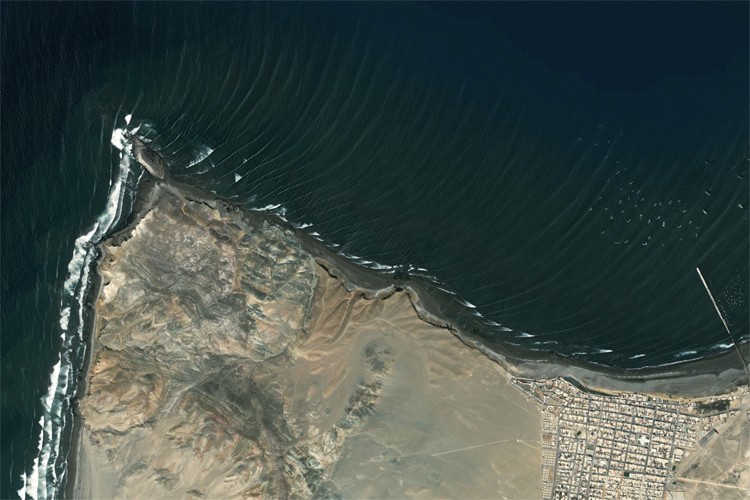It might not be Peru's most famous wave, but the super-long lefthander of Pacasmayo can often be more consistent than its sister, Chicama.
The surroundings are impressive and near post-apocalyptical - a scenario where "Dune" could've been shot.
When surfers arrive at Playa El Faro, the official name of Pacasmayo's surf break, they are hugged by a desert coastline where only one human landmark stands out: the checkered lighthouse.
Located in the La Libertad region, where there's plenty of good surf, this Peruvian town is accustomed to welcoming powerful swells and the wave sports enthusiasts who chase them.
The unforgettable point break wave breaks one mile (1.5 kilometers) southwest of the town and the local airport.
The region lives off fishing and surf tourism.
It's also part of the Moche - or Mochica - civilization (100-700 AD), the people that built the "caballitos de totora" (fishing boats made from the totora cane, similar in shape to surfboards) often associated with the birth of wave-riding and surfing.
One of the great things about Pacasmayo is that it can hold larger swells and get bigger without losing its shape and rideability compared to its neighbor, Chicama, reachable 45 miles (70 kilometers) south.
Locals have reported riding this unbelievably perfect wave for 1.5 miles (2.5 kilometers), nearly parallel to the northwest-facing coast, for four minutes.
But for that, you'll need a 12-foot (3.6-meter) S-SW swell, which, gladly, is relatively common.
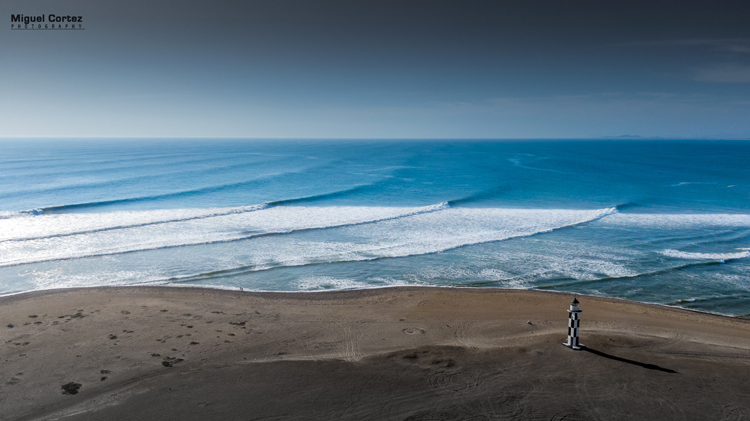
Guided by El Faro
When magic happens, a surfer can ride a left-hand wave from the lighthouse - El Faro - all the way to the Pacasmayo town pier and promenade.
Unlike Chicama, Pacasmayo doesn't section off easily, something that we must admit is profoundly exciting and challenging.
It's like a long, straight racing track but for surfboards.
The ride is not entirely linear, though.
The wave begins with a fast, hollow section that shoots out as it wraps around an old shipwreck.
After this initial burst, it softens into a long, wavy wall with different degrees of steepness, offering small pockets and crumbling sections as it moves consistently northward with almost perfect symmetry.
Closeouts are extremely rare, and the ocean floor is mainly comprised of sand, so you won't get hurt easily.
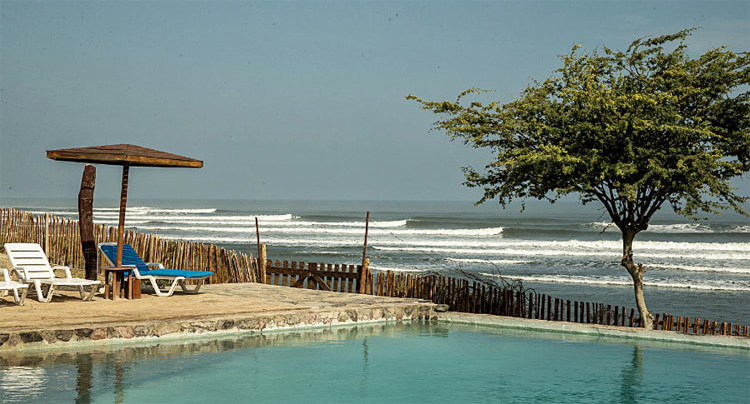
"Pacasmagic": Long Waves and Endless Turns
Ideal conditions require an incoming low tide, a large S-SW swell, light ENE winds, and a weekday to avoid crowds.
During large swells, a strong northward current makes paddling back straight toward the peak nearly impossible.
The alternative is to walk back up to the take-off zone, but rocks, shells, wrecks, sea urchins, and stingrays could make you think twice.
The third option is to paddle straight out to sea, then cross over to the peak to avoid the powerful current.
If none of the above ways of returning to El Faro works for you, you can always pay for a motorized boat (zodiac) to take you back to the lineup, even though it may annoy those who cannot afford the ride.
Riding a long Pacasmayo wave is something you will never forget. And the number of turns and cutbacks you're allowed to perform on the clean wave faces is second to none.
If you're lucky, you can even be greeted or surf alongside pelicans while the magnificent golden sunset sheds the last rays of light over the sandy desert shores.
The best time of the year to surf Pacasmayo is from April to October, even though the Peruvian point break gets plenty of rideable swells all year round.
Bring a comfortable wetsuit, as the coastline experiences chill temperatures from May to November.
Nevertheless, El Faro enjoys a dry climate - it rarely rains by the sea.
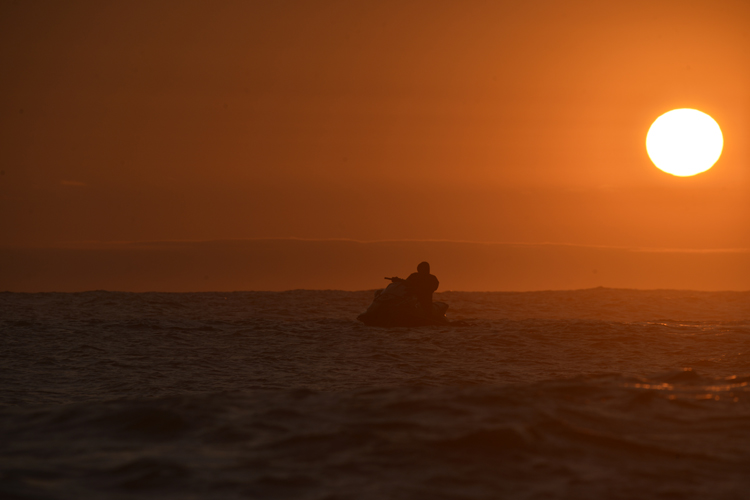
Surf in the Morning, Windsurfing in the Afternoon
While surfing in Pacasmayo is better in the morning, an interesting phenomenon occurs in the spot after lunch.
As the sudden 12-to-20-knot cross-shore wind takes over, sails invade the shores and the ocean.
After lunch, the Peruvian point break becomes a windsports haven with many windsurfers and kitesurfers taking wave sailing to the next level.
Pacasmayo has been a regular stop on the International Windsurfing Tour (IWT) and one of the wave sailors' favorite stages on the calendar.
Note that, throughout the day, there are changes in wind direction until it goes offshore at sunset and near-glassy at dusk.
"Pacasmagic" is real.
When you're done, explore the town's vibrant history and enjoy its delicious fish and seafood dishes in the several restaurants open for business.
The pier that once served as the hub for the transportation of tobacco to Lima and Chile is Pacasmayo's focal point.
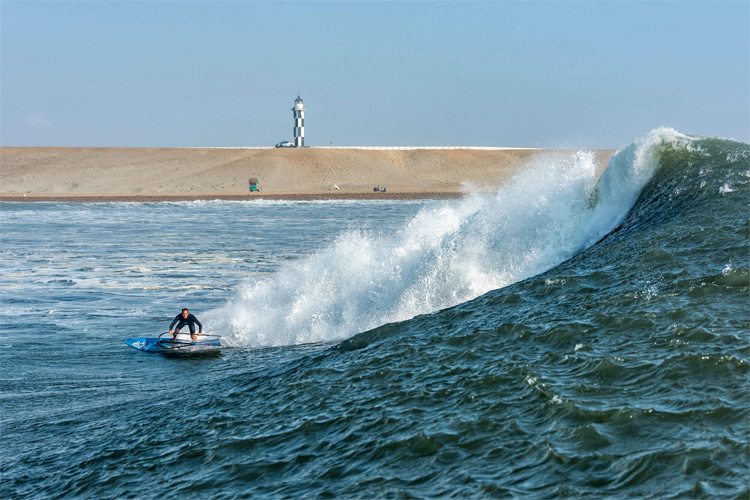
Pacasmayo, Peru | ID and X-Ray
Location: La Libertad
Type of Wave: Left-Hand Point Break
Best Swell Direction: S-SW
Best Wave Size: Head-High to Double Overhead (6-12 feet)
Best Wind Direction: No Wind or SE
Best Tide: Low
Best Time to Surf: April through October
Best Board: Funboard, Shortboard, Semi-Gun, SUP, Windsurfer, Kiteboard
Skill Level: Intermediate, Advanced, and Professional
Crowd: Weekend and Good Days
Water Quality: Good
Hazards: Rip Currents
Bottom: Sand
Water Temperature: 61-82 °F (16-28 °C)
Getting There: Car, Plane, Bus, Taxi
Nearby Surf Shops and Rentals: Yes
Words by Luís MP | Founder of SurferToday.com
